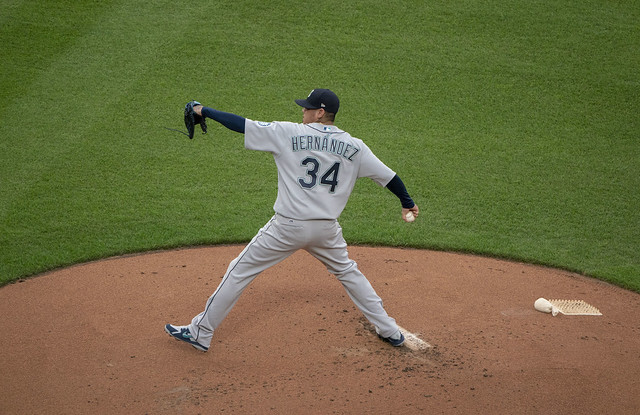Dodgers Hope September Shuffling Pays October Dividends
NEW YORK — They’ve won back to back National League pennants and clinched their seventh straight NL West title on September 10. They have a four-game lead over the Braves for the senior circuit’s best record. And yet, even as they close in on 100 wins and the top NL seed for the playoffs, the 2019 Dodgers are still a squad very much in flux. Lineup, rotation, bullpen — everywhere, key roles up for grabs, as manager Dave Roberts and his staff spend the remainder of September hoping to find a route through October that will end differently than the last two.
This past weekend’s trip to Citi Field for a three-game series against the Mets, who had won four straight and nine out of their last 13, put all of that on display. Friday night’s 9-2 rout was keyed by a fourth-inning, three-run homer off Noah Syndergaard by rookie Gavin Lux, who despite having just 12 major league games under his belt at this writing is amid a successful audition for the starting second base job. Saturday’s lineup featured an outfield of familiar faces — A.J. Pollock, Cody Bellinger, and Joc Pederson — in a configuration that had been used on just two other occasions in the previous 149 games.
Saturday evening’s pitching matchup, though billed as as one between Cy Young hopefuls Jacob deGrom and Hyun-Jin Ryu, was in many ways a crucial test for the latter, who despite leading all major league starters in ERA had suddenly fallen into a four-start funk. He passed his test with flying colors, delivering seven shutout innings, but the bullpen that followed him did not, surrendering three eighth-inning runs that led to defeat. Sunday brought some familiar moving parts back into the mix, and the bullpen — particularly Kenley Jansen — fared much better in the team’s come-from-behind 3-2 victory.
To be clear, some of this was and will continue to be the usual September shufflings of a playoff-bound team trying to cover for injuries and rest some veterans before the postseason. With Justin Turner nursing a mild left ankle sprain, rookie Matt Beaty started on Friday and Saturday at third base, a position he hadn’t played at the major league level before September, though for as useful as he’s been off the bench, he’s no threat to unseat a healthy Turner. Ryu was starting on nine days of rest, while Walker Buehler, who started on Sunday, was pulled after 71 pitches (his fewest since his season debut on March 31) and five innings, pushing his season total to 171.1, 18 more than last year’s combined total in the minors and majors.
Of course, it helps to have expanded September rosters for such an endeavor, and with the Dodgers, Lux is no window dressing. By the time the team’s 2016 first-round pick made his major league debut on September 2, the Dodgers had already started six other players at second base, including July 31 acquisition Jedd Gyorko, who had debuted there on September 1. Led by Enrique Hernández (84 games, 63 starts) and Max Muncy (67 games, 59 starts) and limited somewhat by injuries to both, as well as to Chris Taylor (20 games, 13 starts), the group — including Lux — hasn’t fared badly, ranking ninth among all 30 teams in both WAR (2.9, led by Muncy’s 1.7 in that capacity) and wRC+ (104). But Lux’s torrid minor league season (.347/.421/.607 with 26 homers), his draft pedigree, and his prospect status (number nine on The Board, up from number 23 in February) earned him this shot, and Roberts has liked what he’s seen. “I see composure,” said the manager of the 21-old rookie prior to Saturday’s game. “There’s a confidence. It’s a really good skill set. I see him starting tomorrow against [Zack] Wheeler. And if he continues to play well, the at-bats will be there.” Read the rest of this entry »



 Jay Jaffe
Jay Jaffe